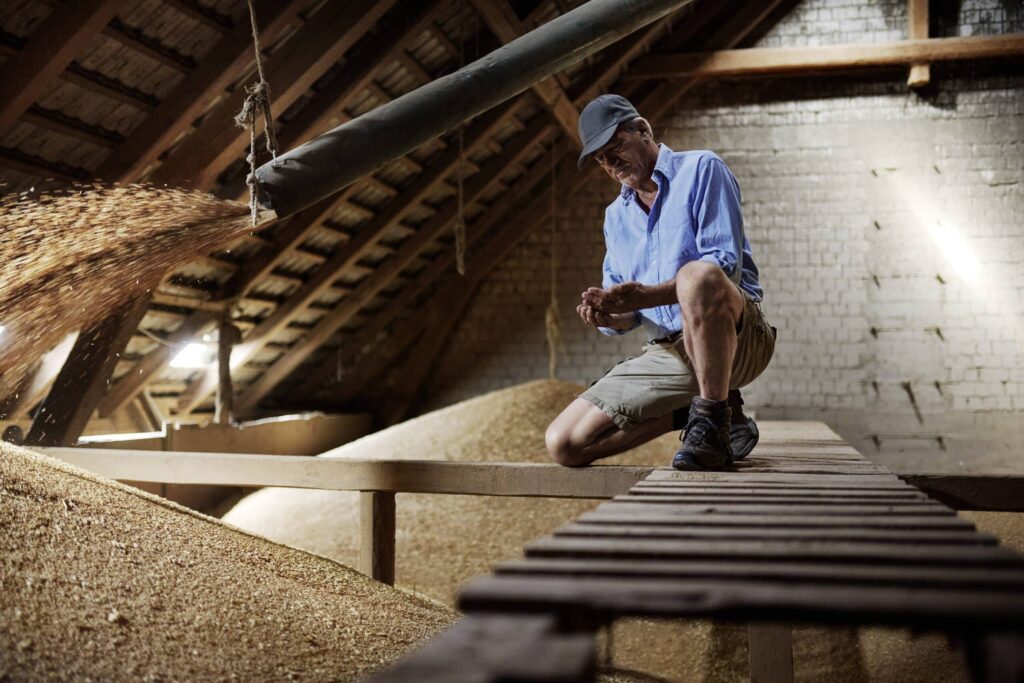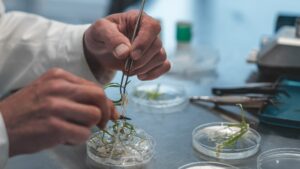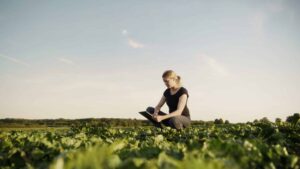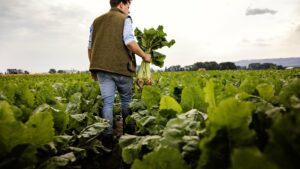A burgeoning world population that needs to be fed. Climate change that imperils cultivated land and water resources due to heat and extreme weather. And not to be forgotten: the threat to biodiversity.
Agriculture is faced with a range of global challenges. Modern plant breeding is there to support farmers in finding comprehensive solutions: Innovative hybrid rye varieties from KWS can contribute to securing and increasing urgently needed yields while using fewer resources. At the same time, hybrid rye used in livestock feed is a very healthy animal feedstuff with many positive properties.
Efficient Nutrient Uptake, Sparing Use of Resources
Innovative breeding work has boosted the performance, efficiency and health of hybrid rye varieties in recent years. This high productivity is essential to producing sustainable food and feed and is thus an especially crucial factor in light of climate change.
Rye has a particularly pronounced root system, making it more efficient at taking up water and nutrients than other cereals. As a result, rye requires a very limited amount of water while hybrid rye consumes even less water due to its smaller leaf surface — 100 liters of water less for each kilogram of harvested crop in comparison with wheat. The reduced amount of fertilizer and pesticides used also conserve resources and protect the environment. The decreased need for nitrogen fertilizer is just one more factor that makes hybrid rye an economically attractive cereal option.
Hybrid rye also features compelling properties that lower CO2 emissions — an assertion confirmed by an external sustainability study commissioned by KWS and conducted by Blonk Consultans: Hybrid rye produces crop yields of about 70 kilograms per ton — around 20 percent less CO2 than, for example, wheat or barley[1]. Improvements to cereals’ CO2 balance largely stems from progress made in plant breeding: A 2022 Julius Kühn Institute (JKI) study shows that the carbon footprint of today’s wheat and rye varieties is 13 percent to 23 percent lower than varieties on the market in the 1980s[2]. Regional cultivation and short transport distances can also improve the carbon footprint for all types of cereals.
Defending against Claviceps purpurea, an ergot fungus dangerous to humans and animals, is another topic drawing even greater attention from farmers. In January 2022, stricter limits for the food industry went into effect across the EU. Modern KWS hybrid rye varieties carrying the PollenPLUS label produce more pollen, markedly strengthening the ergot’s defense. This scientifically proven improvement is being tested in infection trials carried out by, for example, the German Plant Variety Office.
Healthy For People and Animals
The crop is not only useful out on the field and in human nutrition, but also for animal feed: Rye is rich in dietary fiber that easily ferments, so a high proportion of rye in mixed fodder delivers benefits that offer several positive effects in pig feeding, including enhanced gut health, less salmonella contamination, diminished boar taint and greater satisfaction in pens thanks to improved satiety.
KWS’s continuous work to achieve breeding progress in hybrid rye is one successful example that demonstrates this fact: The challenges facing agriculture and the solutions to those challenges must be viewed within a holistic context and not in isolation from one another. With its compelling properties, hybrid rye is already supporting achievement of the climate-related sustainability goals formulated by the United Nations and the EU, while also promoting human and animal health and providing farmers with attractive cultivation options.
[1] Cultivation data was analyzed for hybrid rye, wheat, barley and population rye from 2018 to 2021 in Germany. The data is available in the Global Feed LCA Institute (gfli) www.globalfeedlca.org
[2] Breeding progress reduces the carbon footprints of wheat and rye https://urlz.fr/l8KN









